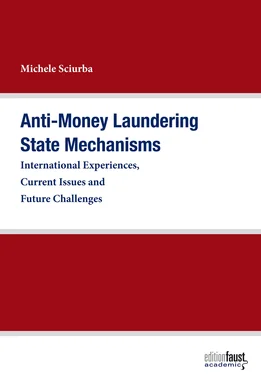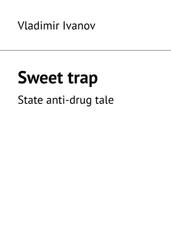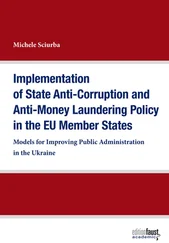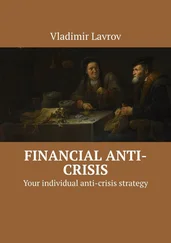Given the original aims of AML and CTF legislation, marrying these two distinct law enforcement objections into one legislative package has produced mixed results. Both in terms of efficiency and fairness, AML/CTF legislation seems to fall short of its goals. The changing face of global terrorism since 9/11, especially with regard to terrorist financing, raises questions as to whether the FATF Recommendations implemented in the 4th AMLD are in fact the best means for preventing terrorist financing and, thus, terrorist attacks. In recent years, as terrorist organisations have been defeated on the battlefield and the fight has moved to civilian targets in Europe and elsewhere, it has become clear that planning and executing a terrorist attack does not require a significant commitment of financial resources or reliance on dubious and complex international financial transactions. Hence, in addition to being discriminatory and incompatible with international and European human rights law, it is questionable whether current AML/CTF mechanisms are effective.
A contributing factor to the inefficiency of AML/CTF regulatory and legislative measures is inconsistent rules. An example of this inconsistency is the treatment of the 4th AMLD with respect to tax predicate offences. Such inconsistencies make it more difficult for national investigative authorities within the European Union and internationally to cooperate with each other. As a result, this monograph argues that regulatory and legislative harmonisation with respect to the United States and other FATF members is central to improving the effectiveness of AML/CTF regimes.
This academic work also examines the connection between money laundering and corruption. Corruption is often a challenge for developing economies and countries transitioning to democratic forms of government. It weakens political and economic reform by creating perverse incentives that undermine free and fair competition. Political corruption opens up the system of public policy to the highest bidder. In many developing countries, the presence of rich natural resources offer abundant opportunities for corruption and bribery that put the brakes on democratic reforms and economic development. In fact, reducing corruption is the single most important factor for improving government efficiency and public service.
Finally, this monograph suggests how AML/CTF regimes can be improved by harmonising national and international legislative and administrative requirements without ignoring violations of civil liberties. Clearly, terrorism poses a grave danger to international security. There is, therefore, a legitimate interest in national and international security. The legitimate need for national security needs to be balanced, however, against the individual right to privacy, due process and civil rights. National security cannot be used as a blanket excuse to suspend or disregard fundamental rights. While much research in the field has focused on the effectiveness of AML/CTF legislation, there has been a striking lack of interest in the impact of the current implementation of these rules on human and civil rights. This monograph seeks to close this research gap by examining how AML/CTF legislation in the US, the EU and the UK can more effectively combat money laundering, terrorist financing and tax evasion without compromising fundamental human and civil rights.
Michele Sciurba
10 February 2018
I.
Theoretical and Methodological Aspects of Anti-Money Laundering State Regulation: The US Experience
I.1 Brief History of Combating Money Laundering
The purpose of money laundering (ML) is to circulate money originating from a criminal offence back into the regular money cycle in order to legalise it. The history of fighting against ML began in the United States (US) in the 1920s. Probably the best-known money launderer was gangster boss Alphonse Gabriel “Al” Capone. Although Capone laundered income from illegal bootlegging and contract killings through various fictitious companies and fake transactions, the US investigative authorities could not produce adequate proof that he was engaged in money laundering. The US Federal Government, however, was able to charge Capone with tax evasion. 1In United States v Sullivan 2, which was a precedent for Capone’s prosecution, the Supreme Court had ruled that illegal income must be taxed. In the end, Al Capone was sentenced for tax evasion in 1931 based on the fact that he failed to submit tax declarations in 1928 and 1929. 3The fight against money laundering and organised crime has ultimately become a key issue for law enforcement. The Bank Secrecy Act of 1970 (BSA) 4requires financial institutions to have compliance mechanisms in place to monitor and report daily aggregates surpassing USD 10,000 in order to counteract organised crime and prevent money laundering. 5At the same time, however, the BSA de facto greatly reduces banking secrecy and the privacy of bank customers, which was previously protected, so that the government can receive information about customers banking operations. The adoption of the Right to Financial Privacy Act (Privacy Act) 6in 1978 initially served as a counterbalance to this legislation.
The basic three-tier model of money laundering includes: (1) the laundering of money obtained from illicit activities, such as drug trafficking or insider trading, (2) via sham businesses, such as restaurant chains, (3) in order to integrate the seemingly legal “dirty” money into the normal banking system. 7The fight against money laundering has been connected to the fight against organised crime and international drug trafficking from the beginning. In the 1970s, the “war on drugs” was the starting point for developing international Anti-Money Laundering (AML) regulations, such as the United Nations (UN) Convention against Illicit Traffic in Narcotic Drugs and Psychotropic Substances 8in 1988. 9In addition, the leading industrial nations decided to take joint action in order to curb the criminal misuse of the financial system for the purpose of laundering drug money at the G7 summit in Italy in 1987, which resulted in the creation of the Financial Action Task Force on Money Laundering (FATF) in 1989, an intergovernmental body commissioned with setting global AML standards.
In 1990, the FATF issued 40 recommendations that served as AML standards for financial institutions. In addition, the FATF created a blacklist of non-cooperative countries and territories (NCCT) faced with severe restrictions in terms of international financial market participation. 10This list illustrates the FATF’s major global influence notwithstanding its lack of legislative status. After the September 11 attacks fundamentally changed the world’s security situation, the FATF published nine specific recommendations on the fight against terrorist financing (TF). Taking into account this new focal point, the UK adopted the Proceeds of Crime Act (POCA) 2002 11in addition to the Terrorism Act 2000 12and the Anti-terrorism, Crime and Security Act 2001 13. The European Union (EU) implemented the Second Anti-Money Laundering Directive (2nd AMLD) 14in December 2001, through which the FATF Recommendations first applied in the European Community.
In the wake of rising national and international security concerns, banks are exposed to severe sanctions and bear legal liability if they fail to comply with AML and Counter-Terrorism Financing (CTF) legislation. As a result, banks have implemented de-risking policies. These policies, however, undermine the confidential nature of the relationship between banks and their customers and disregard the central importance of the duties of loyalty and confidentiality. Based on the risk profiles of their customers, banks try to limit their own risks preventively, for example, by denying accounts or terminating existing accounts of legitimate customers. The risk-profiling policies animate banks to dismiss less profitable customers, discriminate against specific customer groups and justify this conduct with the need to mitigate risks. Using this approach, banks de facto not only act as extensions of law enforcement, but also raise civic and human rights concerns by disregarding the private relationship to their customers. The competent authorities have created a security structure with a significant risk of a restriction of freedom through the increasing cooperation in the centralisation and exchange of personal data. Today, the authorities’ extended power of intervention allows them access to the personal data of any citizen without reasonable suspicion of wrongdoing. The current Anti-Money Laundering regime has evolved into a system that puts the constitutional state at risk and essentially jeopardises the achievements of the state under the rule of law.
Читать дальше












